People have been erecting fences since a long time. The fence protected from predators and performed reliable ...
|
|
Installation of aluminum windows is not very different from the installation of windows from other materials ... |
The scope of the polyurethane foam is quite wide, but most often it is used in ... |
How to choose an acrylic sealant

Herms are called building materials, the main purpose of which is to fill out various voids. At the same time, due to the special properties of the composition, the frozen mass protects objects from the penetration of cold and moisture inside, as well as from entering the holes and cracks of foreign objects. Insulating products are produced in the form of a pasty or viscous text. The scope of acrylic sealant depends on the main composition, but for the most part these products are considered universal. The service life of almost all sealants is calculated for fifteen or more years. The article will talk about how to choose an acrylic sealant.
Content:
- General information about sealants
- How acrylic sealant differs from silicone
- The main characteristics of acrylic sealant
- Technical characteristics of acrylic sealant
- How to use acrylic sealant
- How to make the right choice
- Manufacturers of acrylic sealants
The main effect of acrylic sealant occurs after the polymer (or oligomeric) base begins to harden (and sometimes as a result of the evaporation of the solvent), that is, the process of vulcanization occurs. But there is such a variety of mass, which throughout the entire service life remains in the form of a non -drying putty.
Modern repair and construction work is practically unthinkable without use at a certain stage of sealing compounds. Indeed, it is thanks to them that it is easy to and without subsequent problems to close the joints in any design or achieve hermetic connection. Materials are used, both in home repairs and in professional construction.
Basic characteristics Almost all types of sealants can be called:
- good and reliable clutch with any materials;
- elasticity and plasticity of the applied layer;
- resistance to high temperatures and various atmospheric phenomena;
- safety and environmental friendliness for both humans and the environment.
Although almost all products can boast of these properties, but still their widest assortment is presented on the market, which means that in order to make the right choice you should familiarize yourself with these materials more thoroughly.
General information about sealants
First of all, it should be said that sealants are divided by composition. So, depending on the presence of certain components, they may be:
- acrylic (based on acrylic acid);
- silicone (the main ingredient of silicone rubber is used to seal joints in wet rooms, when glazing windows and balconies, during the installation of polycarbonate structures, insulation of boards and various assemblies of household appliances, and so on);
- bitumen (on a bitumen basis, used to seal roofing structures, seams in a chimney, joints on a basement or foundation);
- butil (butyl is used as the basis, most often such a product is used in the manufacture of double -glazed windows);
- polyurethane (based on a high -elastic polymer of synthetic elastomer, are used to glue materials and seal joints and seams between them, for example, wood, metal, ceramics, concrete, brick and so on);
- thiocol (based on polysulfide rubber, are used in professional construction for sealing interpanel and intercobe seams and joints, as well as in window structures);
- MS is polymer (based on modified silicone, has a wide range of application, due to high adhesion with most popular building surfaces).
The most common species for general purpose of all of the above products are silicone and acrylic products. The difference between them is that acrylic sealants do not have a sharp specific smell, and, in addition, their further staining is allowed. Also at a price, acrylic products are cheaper than silicone. It is worth saying in more detail about their main differences.
How acrylic sealant differs from silicone
- Despite the fact that silicone sealant is the most popular type of production for sealing seams and various cracks, all the same, acrylic products are favorably different from them. Of course, as already noted above, first of all, we are talking about a lower price and the possibility of staining the finished layer.
- Also, at least acrylic is inferior in moisture resistance to silicone, it adds special antifungal and antibacterial components, thanks to which any dampness is not terrible.
- In addition, acrylic materials are quite easy to update, which is almost impossible to do with silicone compositions. If necessary, more serious protection can be acquired by special acrylic sealants, with hydrophobizing properties by adding silicone as ingredients.
- Well, comparisons in aesthetics will also have an advantage with acrylic sealants, as they create a transparent layer on the surface, while silicone has the appearance of a noticeable white strip.
- The main thing to remember is when using certain materials that they have preferred areas of application.
The main characteristics of acrylic sealant
Acrylic sealant is called a composition based on acrylic acid, or based on acrylate. The main purpose of such products is to combine and compaction of sedentary or fixed structures. The insulating effect begins to appear after moisture evaporates from the surface of the applied layer.
Most often, such a sealant is used to seal cracks, seams and joints in a stone or concrete surface, cracks between dry boards, cracks between the wall and the windowsill or between the wall and the door frame.
The composition of acrylic sealant approximately the following:
- acrylic emulsion;
- titanus dioxide;
- calcium carbonate;
- special plasticizers;
- various additives.
Advantages of acrylic sealant:
- simplicity of use;
- excellent adhesion with most surfaces;
- it is allowed to paint the finished layer, as well as plastered;
- during operation, it does not emit toxic chemical elements, that is, it is safe for humans and the environment;
- there is no need to ventilate the premises during the use of the product;
- non -combustible material;
- acrylic sealant can be selected the desired color;
- it will also not be difficult to buy products for a certain type of material, so for wood a special acrylic sealant is sold.
- relatively low cost.
Of course, despite all the advantages of such products, it has its own significant limitations:
- loss of elastic properties at low temperature;
- the product is ineffective in conditions of constant contact with water;
- limited service life;
- they can change the shade when dried, so, the acrylic sealant acquires a yellowish color.
Manufacturers of modern products are trying to improve the qualities of their goods by adding to various elements that can increase the period of operation of the sealing layer and significantly increase deformation resistance.
Technical characteristics of acrylic sealant
- Recommended application parameters: the width of the seam can vary from 6 mm to 5 cm, while the thickness should be within 1/2 of the width. If the seam has a size exceeding 6 mm, then it is best to use a special sealing cord (with a diameter of 6-50 mm);
- acrylic sealant Consumption: Consumption 1 of the packaging of the material with standard application (seam with a width of 1 cm and 0.6 cm thick): containers with a volume of 22 kg in an area of \u200b\u200bup to 300 linear meters; A tube of 325 ml can be laid up to 5 linear meters;
- surface temperature when applying: from +4 to +32 degrees;
- environmental temperature: from -40 to +120 degrees;
- staining: it is allowed to paint the finished layer with latex paints, after 21-30 days after applying the sealant;
- hardening time: with a seam thickness of 10-12 mm, the layer will harden for 21-30 days, while the temperature should be maintained within 20-25 degrees, and humidity is 50-60 %;
- grasping time with the surface; up to 60 minutes;
- frost resistance: withstands up to 5 freezing/defrosting cycles (at a temperature of -15 degrees);
- stretching for gap: 550%;
- poorly tolerates moisture, if it is necessary to work in wet weather, then the outer layer should be covered with polyethylene, it is not recommended to apply on the surface constantly in the aquatic environment;
- packing: cartridge, tubes, plastic buckets or tubes;
- shelf life: in a not unpacked form, 12 months from the time of packaging, at a temperature of +20 degrees, can be stored.
So, acrylic sealant is a viscous mass designed to fill out various voids.
The main characteristics due to which these products are purchased are:
- high strength;
- resistance to deformation;
- excellent adhesion with most surfaces;
- elasticity.
At the same time, a good sealant should fully maintain physical, chemical and mechanical properties during operation, as well as not isolated toxic substances, that is, to be safe.
The products available for sale are divided into one -component, two -component and multicomponent compositions. If the product is ready for use immediately after the purchase, then it means that one specific component is based on it, if the mass should be mixed before use, then this is a polycomponent sealant.
Acrylic sealants are most often used to connect wooden, brick, stone, plastered and drywall surfaces. They are also used to seal seams and cracks in sedentary structures located indoors.
How to use acrylic sealant
- For the use of one-component acrylic products, additional devices are not required, and knowledge of some special rules. Products do not have a smell, do not irritate the skin, so it can be applied without even using gloves and other protective agents. In addition, even if the composition enters the skin, it is easy to wash off with simple warm water, until the sealant has dried. The same applies to the tools that interacted with the mass.
- Of course, when sealing various surfaces, some important rules should be observed. So, if the sealant is used in the bathroom, then before starting to use water, you need to wait for a hardening of the upper layer, otherwise its blur may occur.
- If this does not imply an instruction, then it is not recommended to dilute the composition with water or a chemical solvent. The polymerization process (that is, hardening) occurs in two stages. First, a film appears on the surface, which, although strong, allows for some adjustments, this phase takes 1-3 hours (depending on the surrounding conditions). At the second stage, the final hardening of the mass occurs, and this process can last several days. At this time, it is advisable not to touch the applied layer and not expose it to moisture.
- To apply the sealant, use a special gun (when packing in folic tubes or cartridges) or a spatula (when packaging in plastic buckets), if the mass is sold in the form of tubes, then it is simply squeezed out onto the seam. The applied layer should be given the required form for 10 minutes, since the film will begin to begin and fix the seam will be problematic.
- Opening the packaging, it is optimal to use the whole tool immediately, otherwise in the future it will lose its main qualities.
How to make the right choice
- When choosing a sealant, one should proceed from what materials it is necessary for. So, plastics (for example, polycarbonate, Teflon, polyvinyl chloride, or polyethylene) have minimal adhesion to sealants. Therefore, in order to increase the clutch with such a surface, it is recommended to purchase specialized sealants or additionally use primer compositions that create an intermediate layer and promote a reliable and strong connection of various surfaces.
- Using a sealant in an aggressive environment (high humidity, sharp temperature fluctuations), you should buy products with fungicides in the composition. It is only worth remembering that they are suitable for such rooms as a bathroom, a pool or balcony, but it is not recommended to use them in the kitchen, especially in places in contact with food.
- Acrylic sealants for aquariums are characterized by increased resistance to an aggressive environment, but they are safe for living organisms. In addition, they have increased rupture resistance. Therefore, if there is a need to isolate the seams in the home aquarium, then it is necessary to choose just such acrylic compositions.
- When there is a need for sealing joints in materials with elevated temperature, the sealant should be purchased with an acceptable operating temperature of at least +300 degrees. Only in this case, it is allowed to close cracks or seams in the furnace and fireplace structures and not be afraid that the composition will lose elasticity or collapse under the influence of heat. Now you can find sealants that can withstand temperatures up to +1500 degrees and are fireproof.
- Acrylic sealants are not recommended for external sealing windows or double -glazed windows, as well as in those places where frequent contact with water or chemical reagents are observed.
When buying material for any type of work, it is recommended to ask a quality certificate for acrylic sealant.
Manufacturers of acrylic sealants
The Acrylic sealant market has a fairly wide list of products. Acrylic sealants made in Germany, Poland and Russia are most positive reviews.
Novytkhim
This Russian enterprise, located in St. Petersburg, was founded in 1994. Initially, the company produced only glue and dye for leather products. Gradually, production has expanded and today under this brand you can find a wide range of paintwork, various stains, mastic, primers, putty and sealants.
The success of the company is based on a competent pricing policy, as well as on a scientific and highly professional approach to production. In addition, before allowing the goods on sale, it is subjected to many tests for quality, its weaknesses are revealed, and if necessary, they improve and only after that the product enters construction markets.
Products:
- acrylic white sealant (50 ml, tube) is used to compact and seal seams, price from 20 rubles.
Zigger (KIM Tec)
The German company, which has been supplying high -quality and reliable products to the Russian market for more than 20 years. The most popular products are the mounting foam, paints and sealants. All products are made from high -quality raw materials directly at Germany factories, which are equipped with the most modern equipment. Products belong to the average price category, but have the highest quality.
Products:
- sealant (cartridge, 310 ml), one -component composition for laminate and parquet. Acrylic sealant can be gray, color, pine, birch, cherry, etc. The price is from 140 rubles;
- acrylic sealant (cartridge, 310 ml), designed for sealing seams, joints, cracks between different elements of building structures. The color is white or transparent. Price from 100 rubles.
Acrylic sealant moment (Henkel)
The German company was founded in 1876. To date, from a company producing detergents has turned into a huge concern with large production capacities. The company's factories are located in many countries around the world, including in Russia.
Products:
- acrylic time sealant (420 gr., Russian production), a frost -resistant composition designed to fill the seams and cracks in sedentary structures. Price from 80 rubles;
- the sealant of the acrylic moment of the herment (420 gr., production of Russia), frost -resistant, reliably fastens and seal the crack and cracks between the wall and the ceiling, the wall and the window and so on. The price is from 90 rubles.
Belinka
The company was founded in Slovenia in 1948 and has since produces only high -quality, environmentally friendly products. The manufacturer mainly specializes in protective equipment for various surfaces. All products are made according to European standards and meets high requirements.
Products:
- acrylic sealant (300 ml), is a composition for parquet, various colors. The mass does not contain solvents, and when solidified, it retains elasticity. Price from 130 rubles;
- acrylic sealant (300 ml, Belinka Beldom), one -component mass for sealing and compaction of various seams and cracks, in sedentary structures. Price from 100 rubles.
In addition to the above, you can find the products of the following manufacturers:
- LOCTITE. PL S50 (420 gr., Russian production), frost -resistant acrylic composition, is used to seal sedentary structures, for example, brickwork, concrete walls, wooden buildings, and so on. The price is from 90 rubles.
- Macrophlex acrylic sealant. Makroflex FA 131 (300 ml, Finland production), frost-resistant composition, based on acrylic-lakes. The use of goods inside and outside the room is allowed. The average price of acrylic sealant is 90 rubles.
- Penosil.
- Cosmofen Ca 12 (glue, containers of 20 gr. And 50 gr., Russia's production). A rapidly snapping composition, based on cyanacrylate, has increased adhesion to most materials. Price from 100 rubles. for 20 gr.
- Cosmofen Plus HV (glue, 200 gr., Russian production). The acrylic composition designed for gluing PVC is most often used to install advertising shields. It is resistant to various temperature conditions. Price from 140 rubles.
- Cosmofen plus-s (glue, 200 gr., Russia's production). The sealant is designed to process materials from polyvinyl chloride and foam. Price from 150 rubles.
- Acrylic sealant Tytan. Acrylic sealant (310 ml, Poland production), the main purpose fills cracks, joints in sedentary structures. Price from 85 rubles.
In construction stores, you can also find acrylic sealants released by other manufacturers. In this case, be sure to pay attention to the composition of the product and the expiration date.
It is also not recommended to choose the goods of unknown brands at a too low price. Some manufacturers, in attempts to reduce the cost of their products, significantly change the composition or use a low -quality raw material, as a result of which the sealant loses its basic properties. Therefore, it will be optimal to purchase goods from trusted manufacturers and suppliers.

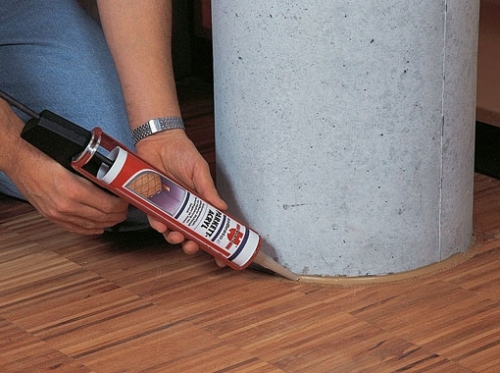


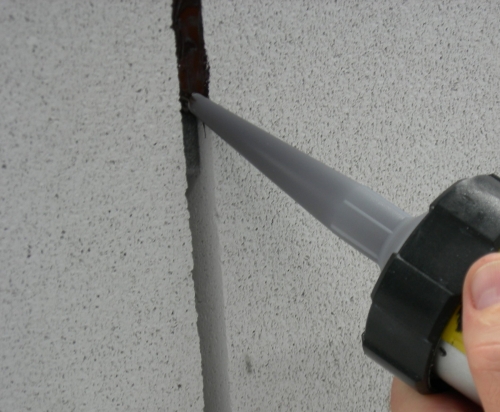
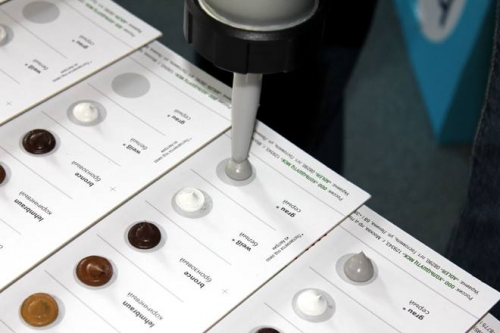
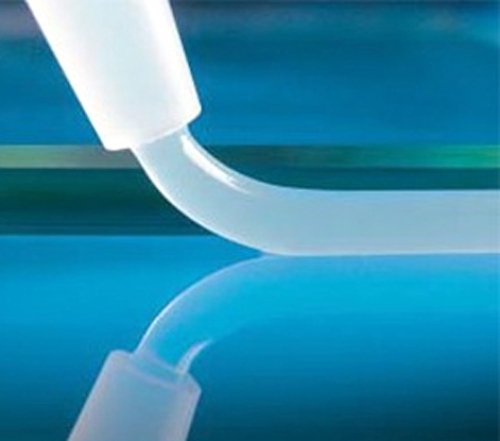
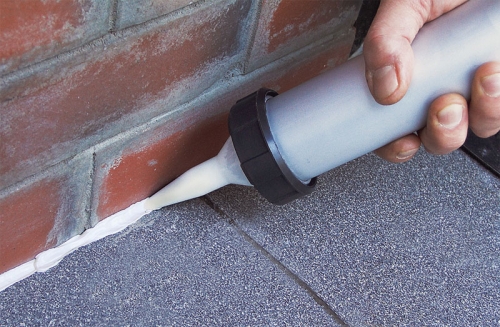
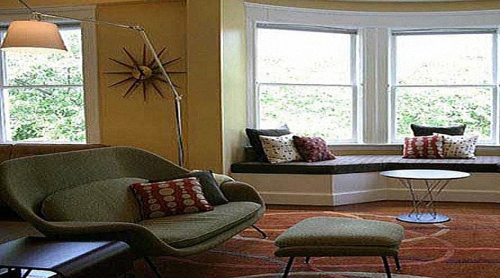
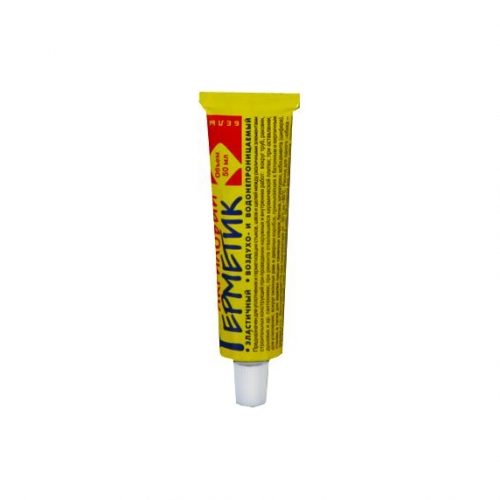
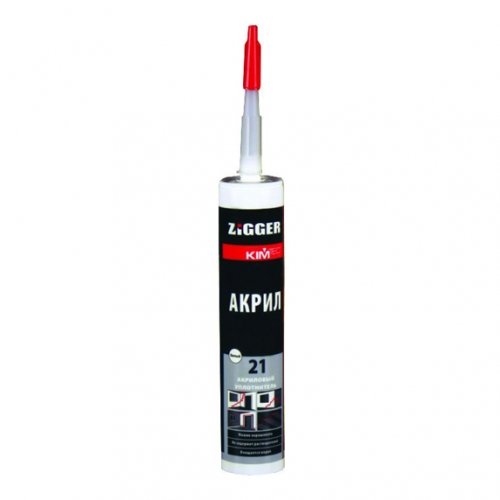
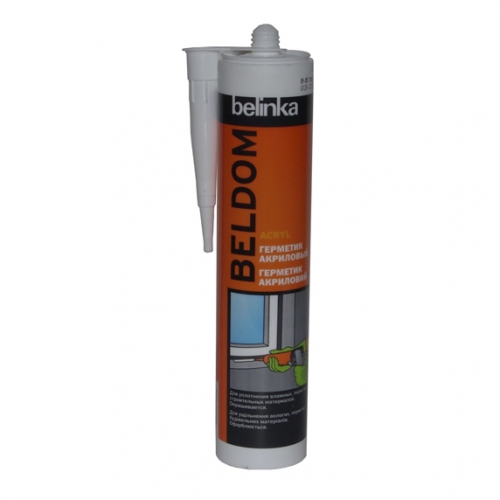
Good article. But Cosmofen K.
Good article. But Cosmofen has nothing to do with Penosil- these are different manufacturers.